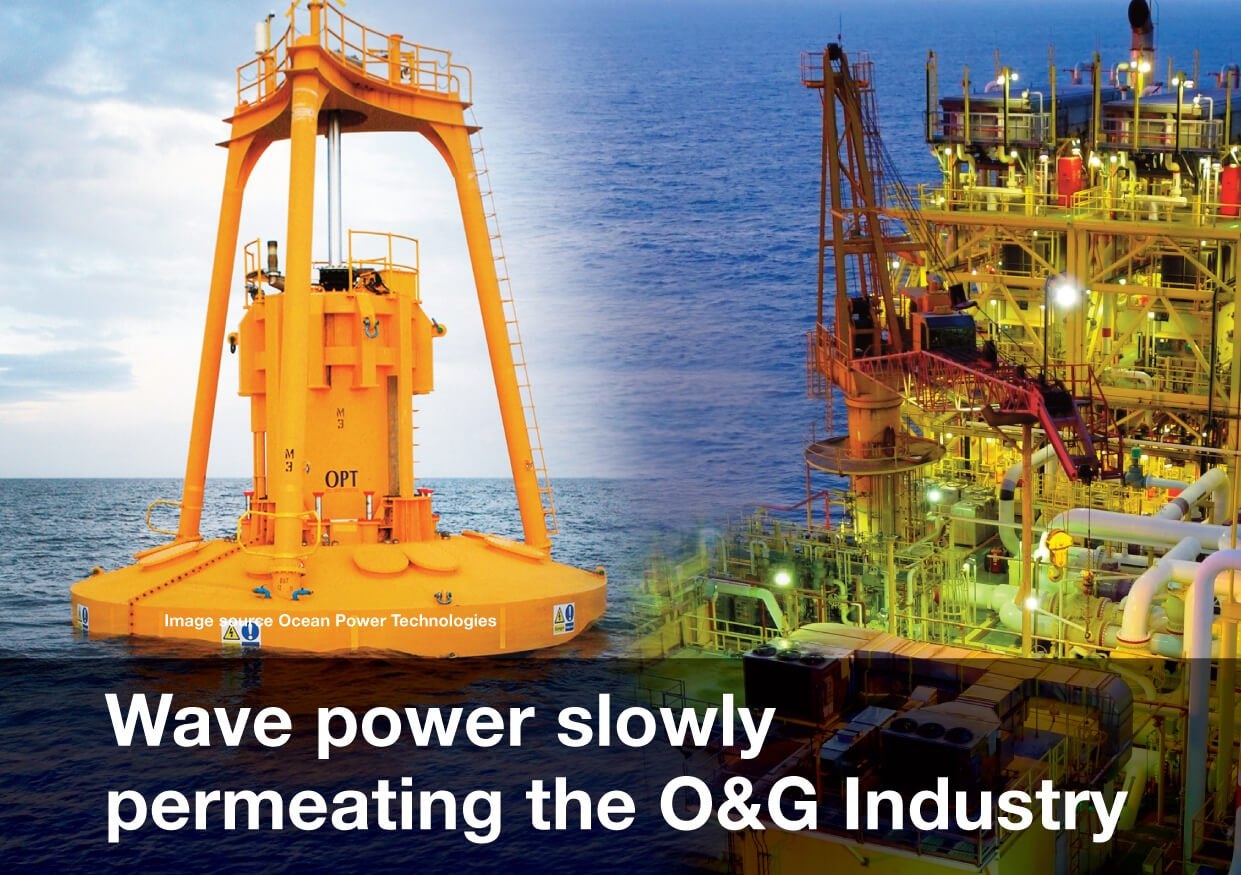Wave Power Slowly Permeating The O&G Industry
Even with all the pushing for renewable and sustainable energies, the current industry landscape across all sectors has been reluctant to apply wave power.
Whether this is due to a lack of sufficiently intelligent solutions or the simple convenience and effectiveness of both wind and solar energies, wave power is yet to make a comparable entrance, despite its widely recognised potential.
This could be about to change, however, as Ocean Power Technologies (OPT), a leading American wave power company, and Premier Oil have recently signed a contract for OPT to supply a PowerBuoy for deployment in one of Premier Oil’s offshore sites in the Central North Sea, Huntington Field. The location is some 200km off the British shoreline, near Aberdeen.
In an industry-first collaboration, implementing wave power on the UK Continental Shelf, the PowerBuoy – which is a floating power station – is expected to serve as a self-sustaining intelligent platform for the site, providing services such as communication and remote monitoring of both internal and external environments.
The timeline of the project foresees it commencing a three-month trial period in October 2018. Following successful completion of this trial, the project is expected to extend over an additional six months, with the option to prolong further, if successful.
Pieter voor de Poorte, lead of Premier Oil’s Subsea Decommissioning, says: “We think this technology has a lot of potential and it aligns well with our goals of increasing safety, efficiency and operational effectiveness. The PowerBuoy system will deliver on all these aspects and offer a step change in our decommissioning planning processes. It also opens up potential future applications for intelligent, remotely controlled small field developments.”
Before this, PowerBuoy has had one significant implementation in the O&G sector, when in March an Italian oil company Eni signed a contract to operate the wave power system on autonomous underwater vehicles conducting marine environmental monitoring and offshore asset inspection. The agreement covers a minimum of two years, with PowerBuoy included for 18 months of the time. The project is based on the Adriatic Sea.
The O&G industry is in a great position to lead the adoption of wave power into mainstream usage. Particularly so, as many have operating within the sector work in aquatic, offshore environments, and have an opportunity to be early adopters of innovative green energy, which we predict to grow in the future.
